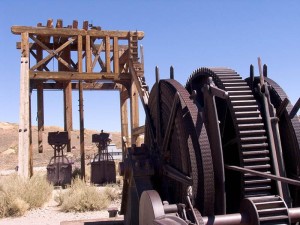How Do Mine-Shaft Elevators Work
Getting to the depths of the planet would be a whole lot harder without these super-strong platforms.
Where underground seams of coal and other minerals are made accessible via a vertical shaft, an elevator is required to lower mine workers down to the appropriate depth. The shafts themselves are circular or rectangular and can employ timber and brick to shore up the walls, although steel and concrete are much stronger support materials used in deeper mines where the lateral pressure is greater.
The basic mine-shaft elevator consists of a drum with a length of suspension cable coiled around it, which is attached at one end to the passenger-carrying car. Both the thickness of the cable and the material it’s made of will depend on the type and depth of the mine shaft. A counterweight that makes up around 40 per cent of the car’s maximum weight hangs on the other end of the cable, helping to control its movement.
Subterranean lift mechanics
Take a tour of one of these underground elevators to unearth the key components…
Drum – The hydraulic engine that turns the drum can hoist in excess of 10m (33ft) a second.
Head frame – It goes by many names, such as pit frame and winding tower, but essentially this structure’s job is to support the hoist/drum.
 Collar – A reinforced platform that provides a solid foundation for the head frame and a stable area for loading and unloading the car.
Collar – A reinforced platform that provides a solid foundation for the head frame and a stable area for loading and unloading the car.
Suspension – The steel cables the car travels on might have a diameter of 4cm (1.6in) and a tensile strength of around 1,670N/mm2.
Lining – Responsible for maintaining the integrity of the shaft barrel and preventing any loose rock from falling down, the lining material is dictated by the local geology, but is usually finished with high-strength concrete.
Car – Depending on the type of mine, the cars can easily carry dozens of miners and/or heavy equipment.

